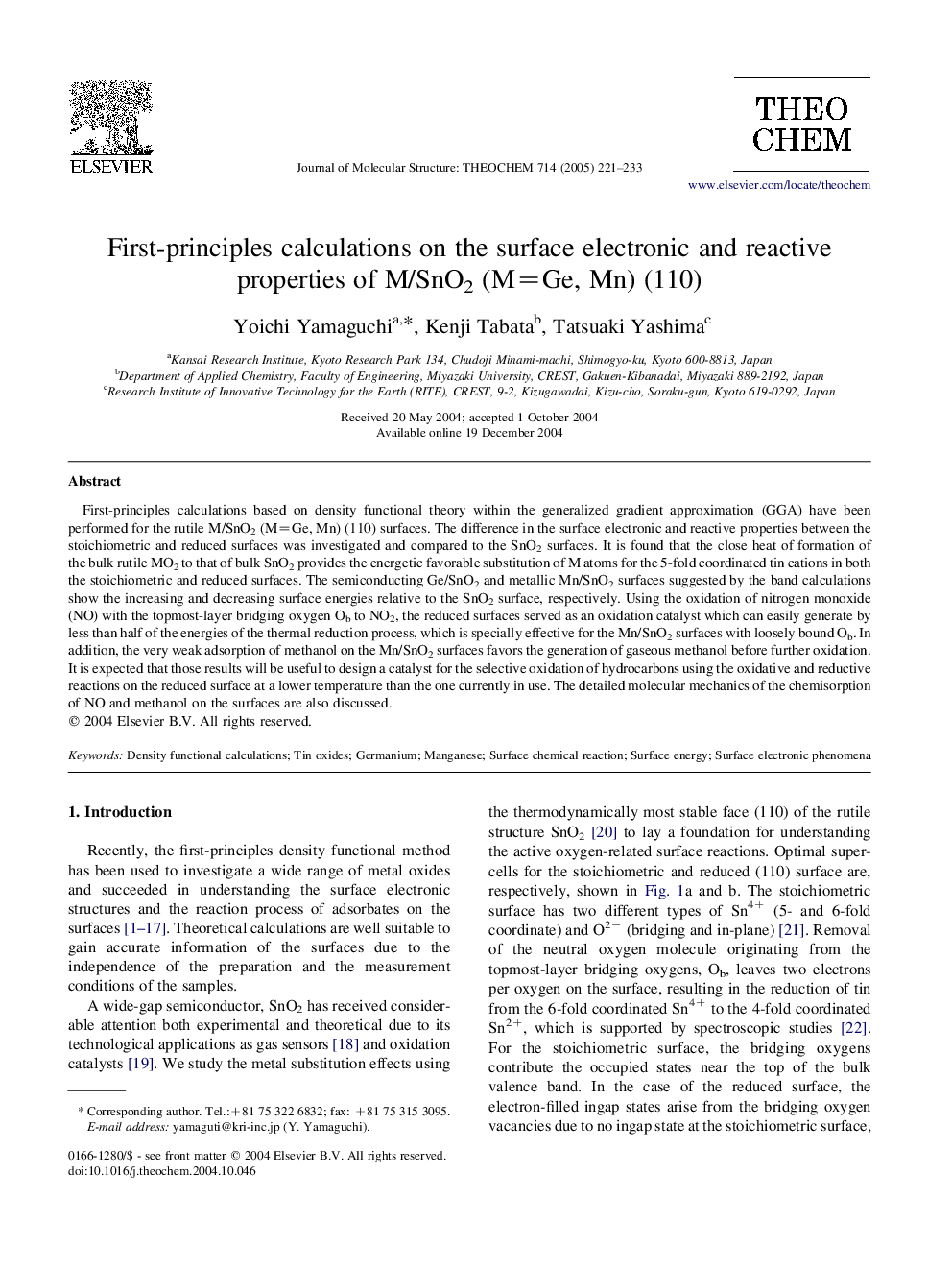| Article ID | Journal | Published Year | Pages | File Type |
|---|---|---|---|---|
| 9590734 | Journal of Molecular Structure: THEOCHEM | 2005 | 13 Pages |
Abstract
First-principles calculations based on density functional theory within the generalized gradient approximation (GGA) have been performed for the rutile M/SnO2 (M=Ge, Mn) (110) surfaces. The difference in the surface electronic and reactive properties between the stoichiometric and reduced surfaces was investigated and compared to the SnO2 surfaces. It is found that the close heat of formation of the bulk rutile MO2 to that of bulk SnO2 provides the energetic favorable substitution of M atoms for the 5-fold coordinated tin cations in both the stoichiometric and reduced surfaces. The semiconducting Ge/SnO2 and metallic Mn/SnO2 surfaces suggested by the band calculations show the increasing and decreasing surface energies relative to the SnO2 surface, respectively. Using the oxidation of nitrogen monoxide (NO) with the topmost-layer bridging oxygen Ob to NO2, the reduced surfaces served as an oxidation catalyst which can easily generate by less than half of the energies of the thermal reduction process, which is specially effective for the Mn/SnO2 surfaces with loosely bound Ob. In addition, the very weak adsorption of methanol on the Mn/SnO2 surfaces favors the generation of gaseous methanol before further oxidation. It is expected that those results will be useful to design a catalyst for the selective oxidation of hydrocarbons using the oxidative and reductive reactions on the reduced surface at a lower temperature than the one currently in use. The detailed molecular mechanics of the chemisorption of NO and methanol on the surfaces are also discussed.
Keywords
Related Topics
Physical Sciences and Engineering
Chemistry
Physical and Theoretical Chemistry
Authors
Yoichi Yamaguchi, Kenji Tabata, Tatsuaki Yashima,
